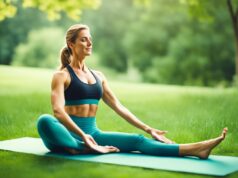Anxiety and stress are widespread problems that millions of people deal with. Periodic stress is a natural part of life, but mismanaged or chronic stress may have detrimental effects on one’s physical and emotional well-being. An evidence-based strategy to help manage stress, lower anxiety, and enhance general wellbeing is to practice mindfulness.

This thorough book examines many mindful activities that you may do to lessen worry and stress. It contrasts well-known methods like yoga, breathwork, and meditation. A frequently asked questions section on mindful techniques is included at the end.
Mindfulness: What Is It?
The practice of mindfulness involves focusing all of your attention and awareness on the here and now. It entails objectively monitoring your feelings and ideas.
Being attentive teaches your brain to react intelligently rather than reflexively to everyday challenges. By practicing consistently, you allow your nervous system to transition from “fight-or-flight” state to more healthy habits.
Studies reveal that mindfulness lowers stress indicators such as cortisol. It may also improve attention and emotional resilience while reducing anxiety, despair, and sleeplessness.
Mindful Techniques to Reduce Stress and Anxiety
You may experiment with a variety of mindful techniques. Among the most well-liked are:
- Meditating
- Inhalation Techniques
- body scans
- Pilates and yoga
- strolling meditation
- Repeating a mantra
- Display
Setting up a routine will be simpler if you choose methods that suit your tastes. An in-depth comparison of the various practices is provided below.
Meditating
Sitting comfortably and paying attention are the two main components of meditation. There are several kinds, such as:
- Practicing mindfulness meditation involves impartially observing one’s thoughts and feelings.
- Concentrating on the breath, mantras, and visualisation is known as focused attention.
- Having compassion for both oneself and other people is known as loving-kindness.
- Transcendental: Repeating a mantra quietly to calm the mind
- Exercise: light yoga, strolling
- Guided: Adhering to spoken cues
Studies reveal that meditating
- lessens anxiety and tension
- reduces pain, rage, and sadness
- increases the ability to regulate one’s emotions and self
To observe results, consistent practice is necessary. Build up to 20 minutes a day, preferably starting with 5 to 10 minutes. Applications such as Calm and Headspace provide guided meditations.

Advantages
- Easy to use and simple; simply needs a calm place
- Many approaches to choose from
- It’s handy with mobile applications.
Cons
- difficult for agitated individuals
- requires perseverance and self-control.
- Not advised in some cases of mental illness without expert assistance
Inhalation Techniques
Controlling your breathing’s depth, rhythm, and tempo is known as breathwork. It triggers the body’s relaxation response to reduce stress, much as meditation does.
Often used methods consist of:
- Breathing deeply from the abdomen: steady, diaphragmatic breaths
- Counting: equal-length cycles of inhalation and exhalation
- Ocean breath: when you release the breath, make a “wave” sound
- 4-7-8 (or other count patterns): inhale for four seconds, hold for seven, and exhale for eight.
According to research, breathwork is beneficial.
- lessen insomnia and anxiety
- Reduce PTSD and sadness
- Reduced arterial pressure
- Boost heart and lung health
Set a daily goal of 5–10 minutes. This makes doing breathwork to reduce anxiety before meetings or presentations simple. Guidance is available via the Breathwrk and Prana Breath apps.

Advantages
- Available anywhere, at any time
- aids in changing the body’s stress response
- short time commitment
Cons
- Simple to overlook or forget
- Not as regimented as meditation
- Breath capacity may be limited by physical constraints.
Body Exams
When you do a body scan, you methodically move your gaze over various body regions. By observing bodily sensations in an impartial manner, you alleviate tense spots.
This is usually done starting from the toes and working up through the arms, shoulders, back, neck, and face. You may control your breathing by taking in and releasing air into each body component.
According to research, body scans:
- Diminish tension and unease
- aid in the treatment of chronic pain and sleeplessness
- Develop bodily awareness and presence.
Begin with five to fifteen minute sessions while seated or laying down. As your ability to maintain concentrate increases, extend the duration. There are guided body scans in the Balance and Insight Timer applications.
Advantages
- eases the strain in the muscles
- No fitness level or equipment is required.
- enhances the mind-body relationship
Cons
- may cause uneasiness or restlessness
- needs the capacity for visualisation
- Not appropriate for those who have dissociative disorders or trauma
Pilates and yoga
Yoga brings mind-body awareness via combining physical activity, breathing techniques, and meditation. Pilates emphasises core strength and connects breath to movement as well.
Both methods are beneficial:
- Boost your ability to withstand stress
- Reduce PTSD, sadness, and anxiety
- Boost your vitality, health, and mobility
- Develop inner serenity and acceptance of yourself.
Yoga that is more moderate, such as hatha, yin, and restorative yoga, is ideal for beginners. Attend courses or watch videos on the internet to get the right advice. Combination advantages are provided by yoga pilates fusion.
Try to practice for at least half an hour every day. Guidanced training is available via well-known applications like Pilates Anytime and Down Dog.
Advantages
- Holistic wellness integrates mental, emotional, and physical health.
- The social component of the classroom might increase drive.
- enhances cardiovascular health and strength
Cons
- Risk of harm from incorrect practice
- Pilates requires the use of exercise equipment.
- Yoga props like straps and blocks may become pricey.

Strolling Meditation
Walking meditation blends mindful awareness with slow, deliberate movement. You consciously become aware of the bodily experiences associated with each stride.
Types consist of:
- Walking with awareness: observing your gait and foot placement
- Labyrinth walks: meandering garden trails
- Breath synchronisation: timing inhalations and exhalations
Studies reveal:
- lessens ruminating and sadness
- reduces anxiety
- enhances energy, mood, and memory
Spend ten to thirty minutes walking and thinking inside. Experiencing the natural beauty outdoors might heighten feelings of tranquilly. There are guided tracks on the Buddhify app.
Advantages
- Mild, low-impact physical activity
- Easy approach to experience movement meditation
- Spending time outside improves mood
Cons
- Could be annoying in louder environments
- weather-related restrictions
- need a smooth surface for walking
Repeating a Mantra
Mantra meditation is reciting a calming word or phrase aloud. This might be of a secular (calm, tranquilly) or religious (Om, Jesus) character.
Features consist of:
- gives “monkey mind” a straightforward focus point to help control it.
- relates slower brainwave states to repeated sound
- able to synchronise with the breathing cycle
Research demonstrates the repeating of mantras:
- lessens tension, worry, and sleeplessness
- increases memory and emotional resiliency
- offers a handy tool to divert anxious thoughts
Begin by letting the mantra to flow continuously for 10 minutes each day. Vibrating loudly while chanting may help reduce tension due to its vibratory effects. “So hum” (I am that) and “Om mani padme hum” (the gem is inside the lotus) are common mantras.
Advantages
- Easy-to-learn method suitable for novices
- Use discretion while in loud situations.
- simpler than breath counting or visualisation
Cons
- may first feel uneasy
- Possibility of being bored or sidetracked
- Irritability if words are difficult for you to repeat
Display
Visualisation, often known as guided imagery, is the process of imagining peaceful situations in your mind. The relaxation response is triggered by this rich sensory encounter.
Types consist of:
- Visualise sun-drenched affected regions to be filled with healing light.
- Scenes of nature: picture stunning woods, beaches, etc.
- Journey: Recalling a cherished, consoling memory
- Warm visuals that make you want to give a loved one a hug
Research suggests that visual aids
- lessens anxiety and tension
- enhances the treatment of chronic pain
- increases drive and originality
Sessions may last anything from five to thirty minutes. Consider using the tranquil guided meditations available on apps such as Breethe and Insight Timer. Creating individualised music may enhance the experience.
Advantages
- mentally goes beyond everyday concerns
- encourages originality and problem-solving
- might be superimposed over monotonous jobs like jogging
Cons
- Simple to nod off or lose concentration
- Not appropriate for those who easily dissociate
- may first come out as infantile

How To Begin Practicing Mindfulness
- Select appropriate techniques: Pick one or two that work for your requirements and way of life. Blend complimentary techniques such as yoga and breathwork.
- Decide on the length and frequency of your commitment to consistency. Make everyday practice a priority, even if it’s just for five to ten minutes at first.
- Make reminders: You may include regular mindfulness into your schedule by setting up post notes, calendar notifications, and app downloads.
- Observe without passing judgement. Let go of the need to do postures flawlessly or to fully declutter your thoughts. The rewards of not striving are greater.
- Have patience—mindfulness grows just like a muscle. It becomes stronger when it perseveres in the face of difficulties and diversions.
- Seek assistance by thinking about enrolling in courses or online forums. Partners in accountability provide inspiration.
A Table of Comparative Mindfulness Practices
| Type | Time Commitment | Difficulty | Cost |
| Breathwork | 5-10 minutes | Beginner | Free |
| Mantra Meditation | 10-20 minutes | Beginner | Free |
| Yoga | 30-60 minutes | Beginner to Advanced | $ for classes/equipment |
| Meditation | 10-30 minutes | Beginner to Intermediate | $$ for apps/retreats |
| Visualization | 10-30 minutes | Intermediate | Free to $$ |
| Walking Meditation | 20-60 minutes | Intermediate | Free |
| Body Scan | 15-30 minutes | Intermediate | Free |
| Pilates | 30-60 minutes | Intermediate to Advanced | $$ for equipment/classes |
Commonly Asked Questions
When will engaging in mindful activities start to pay off?
Acute benefits, such as a reduced heart rate after yoga, manifest immediately, while major impacts take time to manifest. According to research, practicing for at least eight weeks reduces anxiety and stress in a meaningful way.
What time of day is ideal for mindfulness practice?
A: That is contingent upon your unique energy signatures. Mornings are common times to make good goals and unwind before bed. Try different things, however, to see what suits your schedule the best. A brief respite at lunchtime promotes mind-body rejuvenation.
Do I need any specialised gear?
A: No, you don’t need props to practice the majority of skills. Alternatives like yoga straps and blocks modify exercises to accommodate varying skill levels. The comfort of sitting is enhanced with meditation pillows. you really just need a calm area to begin with.
Does mindfulness make depression or anxiety worse?
A: In rare instances, by bringing repressed emotions to light, meditation may at first make people feel more distressed. If this happens to you, either take it slow until things settle down or get help from a specialist. Walking or other mindful exercises may seem more consoling.
How can I maintain a routine?
Maintaining consistency may be difficult. It is helpful to make some activities, like cleaning your teeth, an obligatory daily task. Begin with very little and short sessions. Connect to current routines, such as doing breathing exercises before meetings or meditating during lunch. Sponsors, applications, and class pledges all increase adherence.
In summary
By triggering the relaxation response, including mindful techniques helps to lower stress, anxiety, and depressive symptoms. Focus, resiliency, and inner calm are also improved by practices like yoga, meditation, breathwork, and mantra repetition.
Select complimentary techniques that fit your schedule and make time for short daily sessions. During the learning curve, have patience and don’t criticise unavoidable diversions. Regular mindfulness practice strengthens emotional resilience to assist with life’s unexpected turns.








